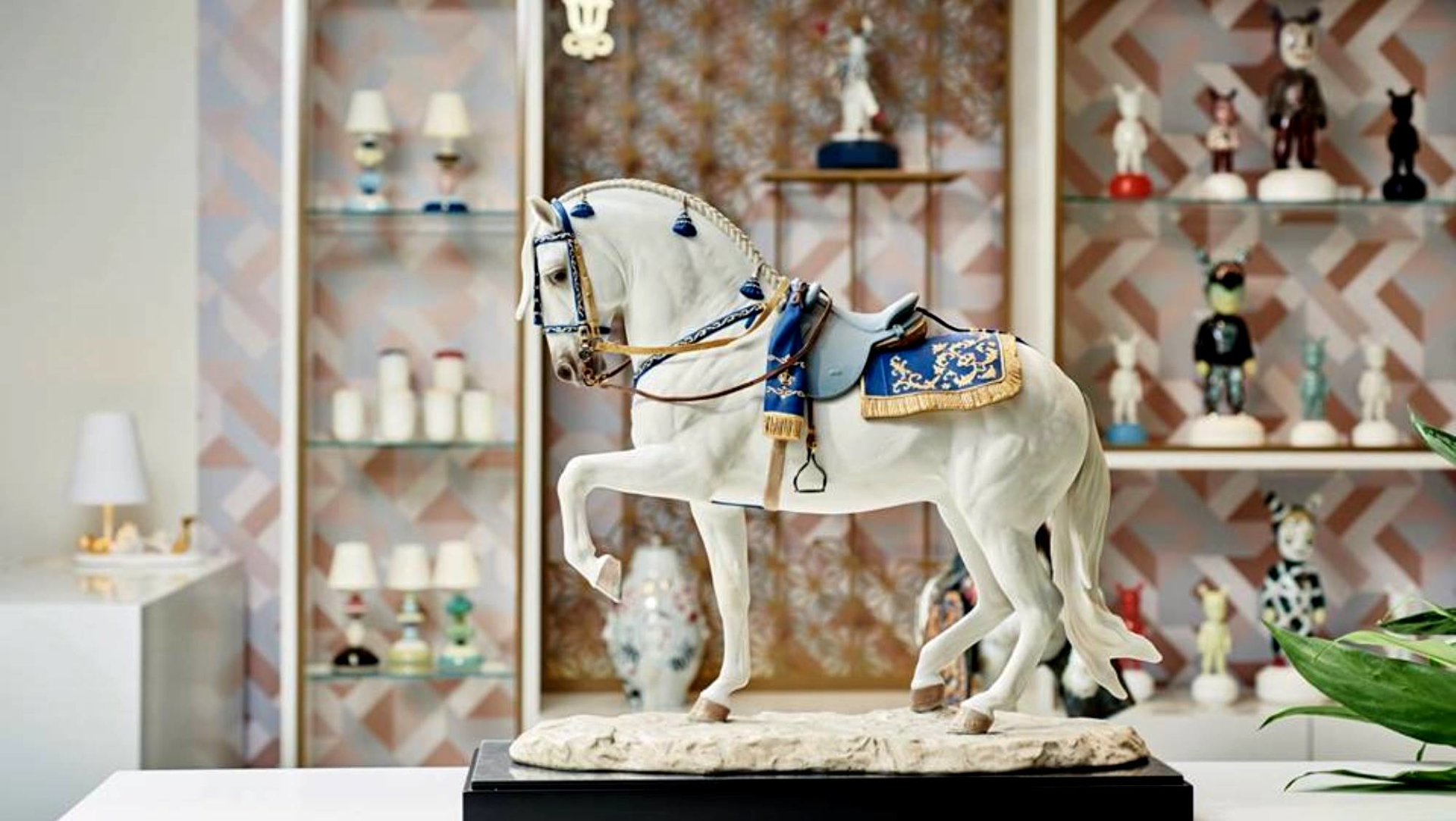Lladró S.A. is the family-owned company and designs and sells porcelain home décor products. The company provides products in the categories of lighting, lithophanes, fantasy, bridal and romanticism, horses, high porcelain, mirrors and wall art, oriental traditions, women, other animals, vases and decorative, men, angels, Spain and traditions, children, Christmas, re-deco, Christianity and Judaism, ballet and circus, naturofantastic, sculptures and nudes, Buddhism and Hinduism, sports and professions, jewelry accessories, flowers, motherhood and families, and dogs and cats. It markets and sells its products through its boutiques in New York, Beverly Hills, Moscow, Tokyo, London, Beijing, Hong Kong, Shanghai, Singapore, Delhi, Mumbai, Madrid, Barcelona, and Valencia, as well as through retailers worldwide. The company was founded in 1953 and is based in Valencia, Spain.
History
The 1950's: The beginning of the adventure. In 1953, at their home in the village of Almàssera, they began to make their first plates, vases and ceramic figurines inspired by the works of the great European manufacturers of Meissen, Sèvres and Capodimonte. It is in this period that the modeling of flowers or the complex treatment of tulle first appeared, examples of virtuoso techniques that we still find today in many of the brand’s creations. At the end of this decade, Lladró opens its first store in Valencia.
The 1960's: The consolidation of a style. Fruit of constant artistic restlessness, at this time a unique and distinctive style is forged, with elongated lines, which makes Lladró works world-famous. In a demonstration of dexterity and mastery in handling material, the pieces become increasingly more complex and dynamic, challenging the laws of gravity. Lladró introduced the revolutionary single-firing method which soon replaced the tradition triple-firing. This pioneering method also helped to define another hallmark of the brand: the characteristic pastel tones of a large part of its work. In 1965, with little more than a decade to its credit, Lladró entered the American market. And in 1969, Lladró opened its current headquarters in Tavernes Blanques (Valencia).
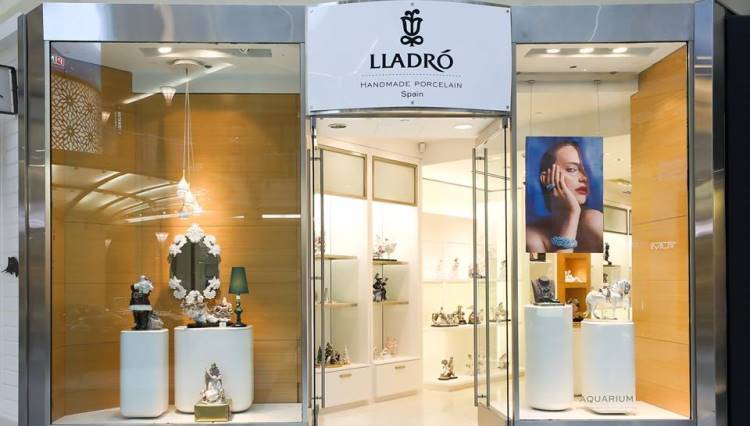
The 1970's: Recognition. The 70s are years of feverish activity and creative maturity. The quality achieved leads Lladró to undertake more ambitious works, the first limited series are born and the definitive international recognition arrives. After intensive research, it begins to work with gres, a new material that opens up a whole world of expressive possibilities. The particular resistance of this material and its characteristic earthy tones expand the creative resources of Lladró's artists.
The 1980's: Reaching new heights. In the 1980s, the constant search for new ways of expression continued apace. Greater control of porcelain enabled creations that show an extraordinary mastery of modeling. In singular collections like Sculptures, Caprices or Goyescas, the artists’ imagination is carried away by fantasy and the pleasure of creation. In this decade Lladró reaches two major milestones in its international expansion. In 1986 Lladró disembarked in Asia with subsidiaries in Japan and China. And in 1988 it opened its first museum and gallery in New York City, on Fifth Avenue in Manhattan. And the process of internationalization continued steadily in emerging markets like Russia, Eastern Europe or India.
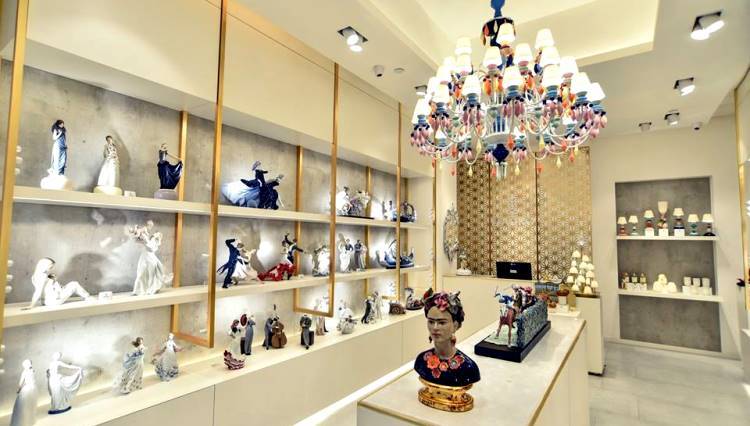
The 1990's: Excellence. In the nineties Lladró produced many highly complex period scenes, most of them incorporating vivid floral compositions which represent the greatest expression of the painstaking attention to detail and know-how of Lladró artists. In 1995 the first Lladró boutique opened in Tokyo, in the fashionable district of Ginza; in 1996 its first own store opened in calle Serrano, the exclusive street in Madrid, and in 1997 the Beverly Hills boutique opened its doors in Rodeo Drive. In this decade Lladró receives two prestigious awards: the Príncipe Felipe Prize for Internationalization in 1993 and the Príncipe Felipe Prize for Competitiveness in 1997.
The 2000's: New Paths. Lladró takes its expressive potential to new heights in High Porcelain, a collection of pieces with extraordinary artistic and technical quality, destined to form a select group of masterpieces within the brand's production. At the same time, Lladró reinvents itself with sculptural pieces in matte white porcelain or dynamic and expressive pieces decorated in vivid colors. This diversity of product is reinforced with the collaboration of outstanding external designers such as Jaime Hayon, Bodo Sperlein and Culdesac, who add their personal and artistic universe to Lladró's work in a fruitful creative exchange. In 2006 and 2009 Lladró opens two boutiques in Moscow, at the prestigious Petrovsky Passage and GUM mall, respectively. In this decade Lladró received the Príncipe Felipe Award for Renowned Brand Management (2002).
The 2010’s: Diversification. Lladró intensifies its creativity in functional lines of lighting, home accessories and jewelry, reinforcing its position as a porcelain brand that represents a contemporary, elegant and exclusive lifestyle. Collaborations are also intensified in a fruitful creative exchange with renowned external designers such as Paul Smith, Rolito or Gary Baseman. In 2012 the Lladró Boutique in New York City opens its doors at 500 Madison Avenue.
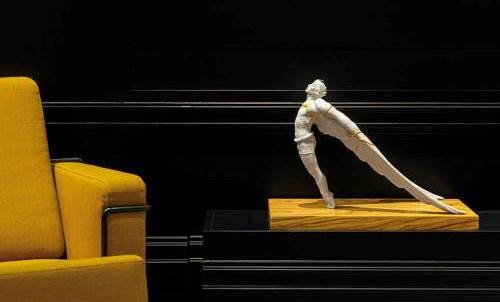
Know how
At an unhurried pace and with the same loving care and attention as once lavished by alchemists of old, Lladró porcelain is still handcrafted in Spain, at the company’s only factory in the world, located in Valencia. The so-called "white gold" in the Chinese Tang dynasty (618-907 AD) is made up of minerals such as kaolin, quartz and feldspar, with which Lladró creates up to 32 different types of porcelain of the highest quality for its varied range of products.
The birth of Lladró porcelain begins with the original idea of its author. With his hands and traditional tools, the sculptor gives shape, in clay or plasticine, to a sketch based on his own inspiration and a painstaking process of documentation that, in the case of human figures, it often requires live modeling.
Once the sketch has been modeled, the exciting artistic development of the original model begins. The technical team must visualize and define the fragments in which each piece will be broken down in order to reproduce it later. There are creations so complex that they need to be divided into more than 400 fragments.
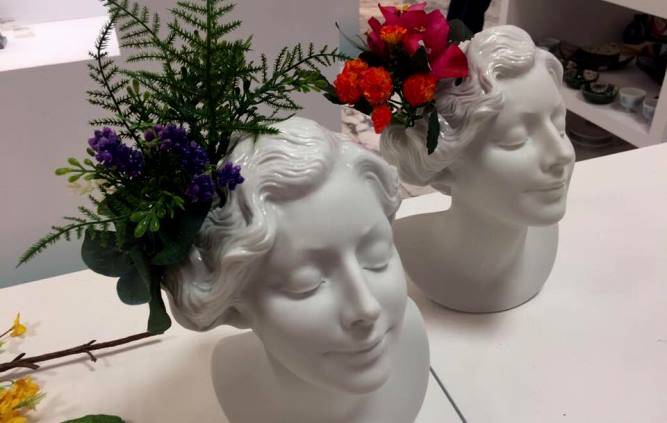
This initial fragmentation enables the first reproduction of the different parts in alabaster, a highly resistant material on which sculptors and ornamentalists, with craft techniques of carving and engraving, etch to the smallest detail the faces of figures, architectural elements, vegetation or clothing.
These fragments will form the basis for the die set to create the matrix molds, that are used to obtain the definitive molds. This carefully executed artistic process, from the birth of the idea until the model is ready to be reproduced in porcelain, can take up to five years for the most complex creations in the High Porcelain collection.
To bring the piece to life, their definitive molds are filled with liquid porcelain that slowly sets inside. With great care, the artists carefully extract the parts of this magical puzzle and recompose them. The molds deteriorate with use, so every once in a while it is necessary to re-create them from their original matrix.
Another key moment in this creative phase is the decoration of the piece. With over 4,000 different colors, the Lladró palette is in constant evolution, continuously adding new tonalities created expressly for some pieces.
And finally, the key moment arrives: the firing in the kiln. As the artists say, porcelain is alive and it is in the kiln where the success of each creation will be judged. In the kiln, the piece undergoes temperatures of up to 1,300ºC (2,500ºF) for a whole day and the true Lladró colors come to the surface.
During the process, the porcelain paste loses water and its size is reduced by about 15%. Ensuring that this reduction in size is uniform and that the piece does not suffer any damage, is one of the biggest miracles that take place at Lladró. In the most complex pieces, a porcelain support system is used, which is almost a feat in engineering itself and supports the piece in areas that are difficult to balance. Another key moment in this creative phase is the decoration of the piece.
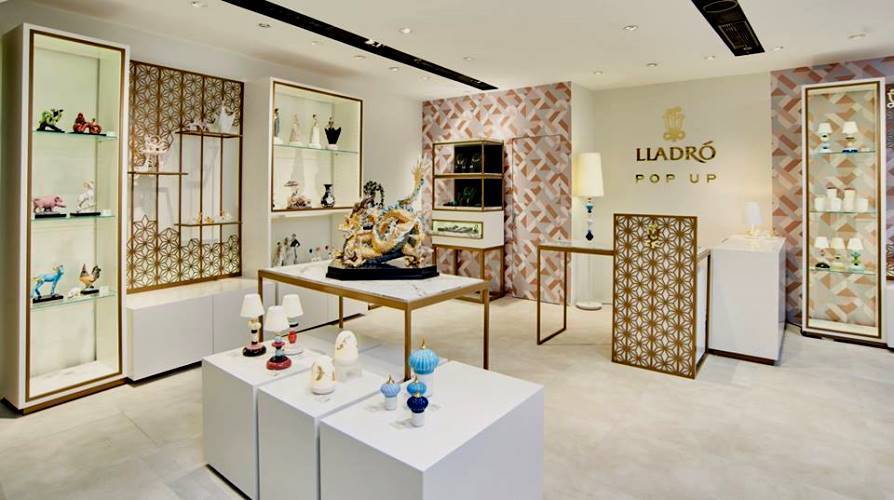
This complex and laborious process is the only one capable of guaranteeing the degree of excellence that has won Lladró worldwide recognition. The search for perfection also extends to quality control, where the finished sculpture undergoes various tests that certify that it fulfils the high standards demanded by the brand.
Excellence is also applied in the packaging, customized to the individual features of each piece in order to ensure that it reaches its final destination safely and in perfect conditions.

